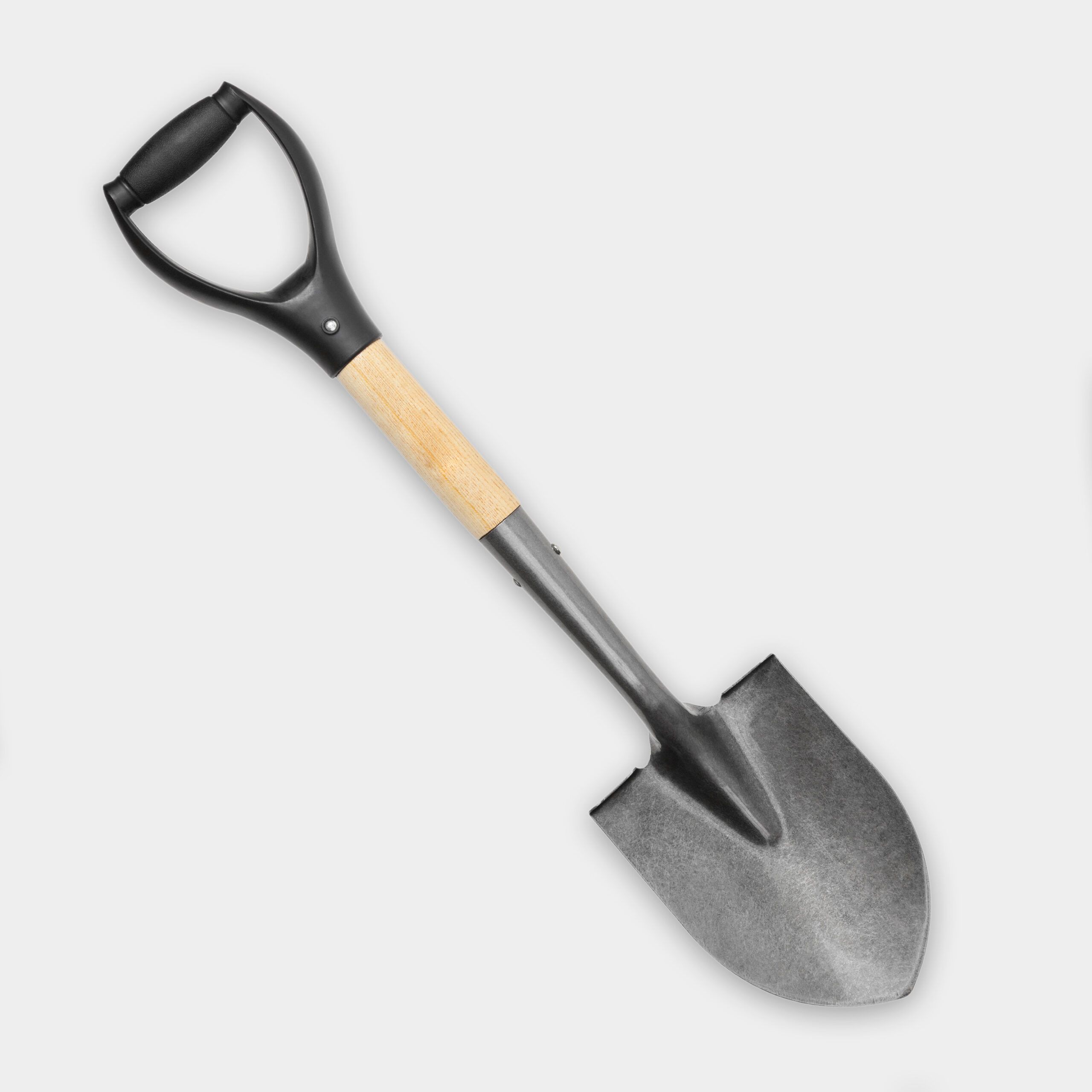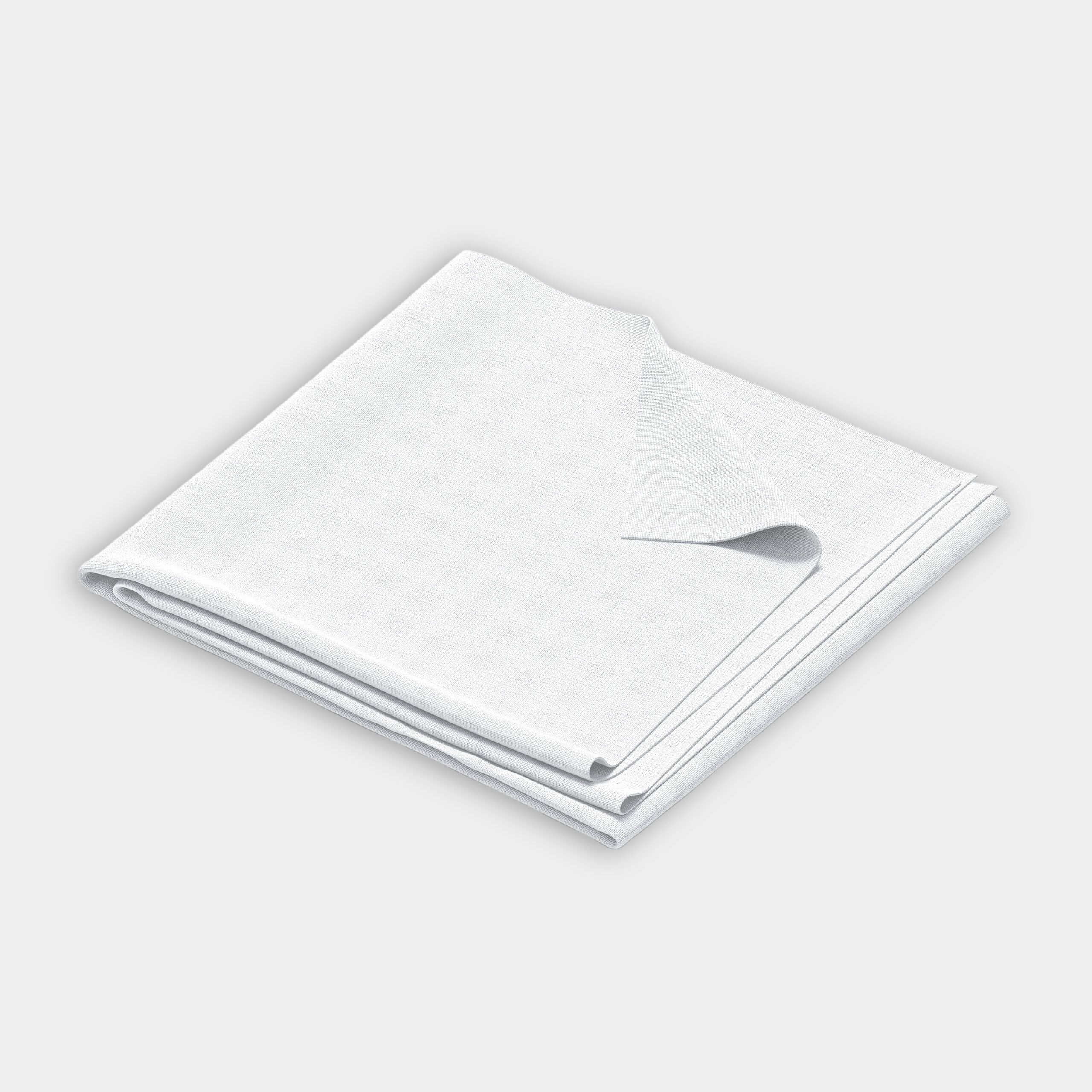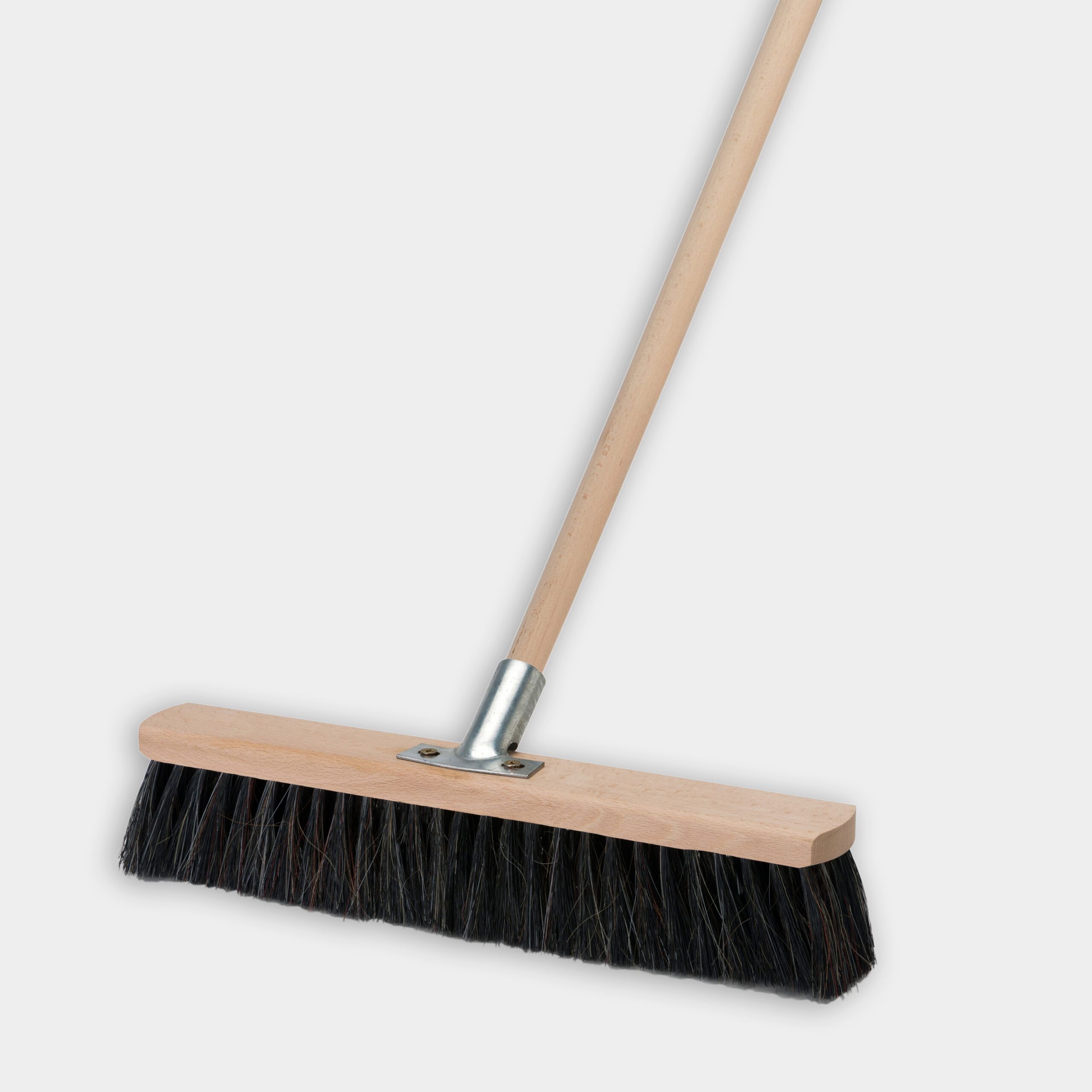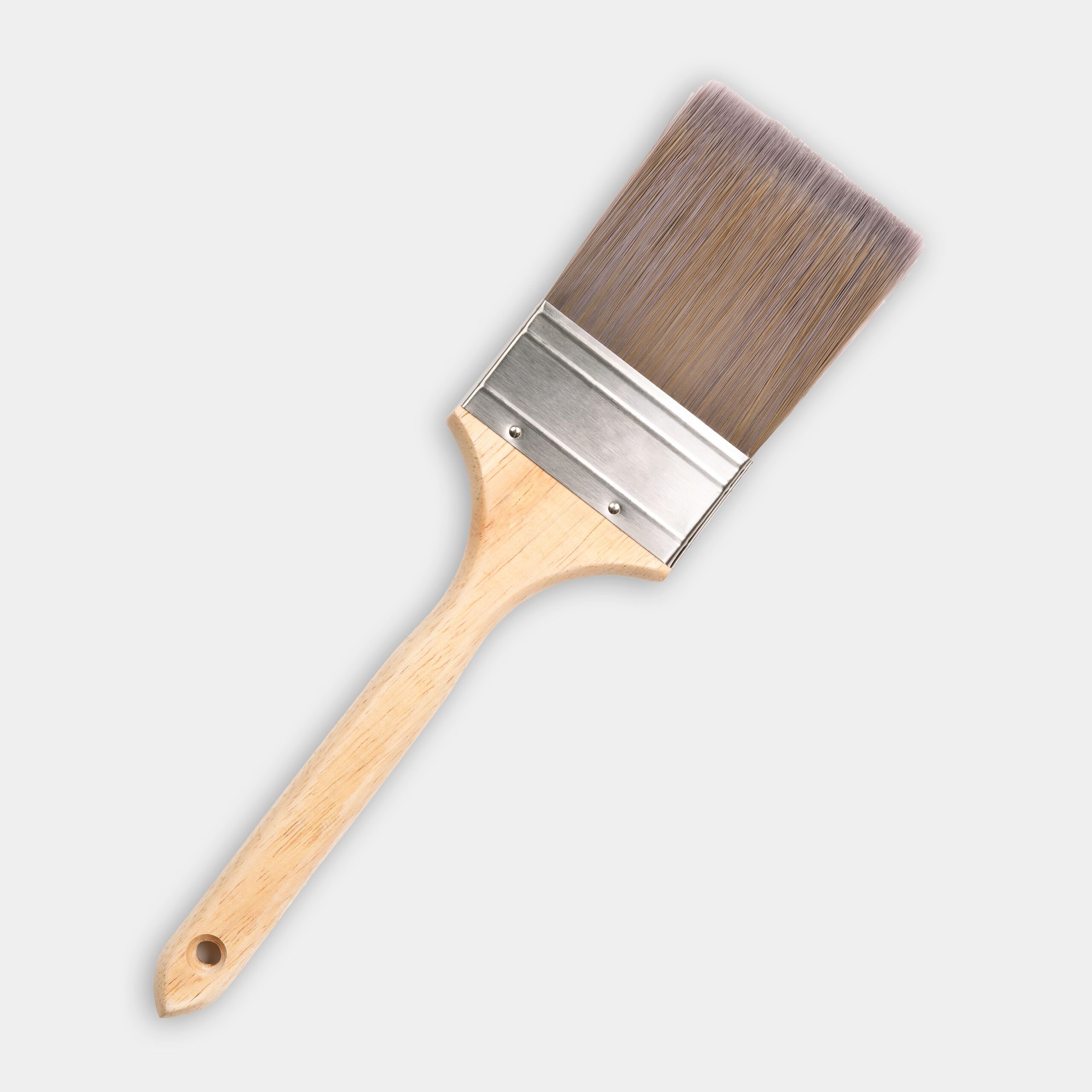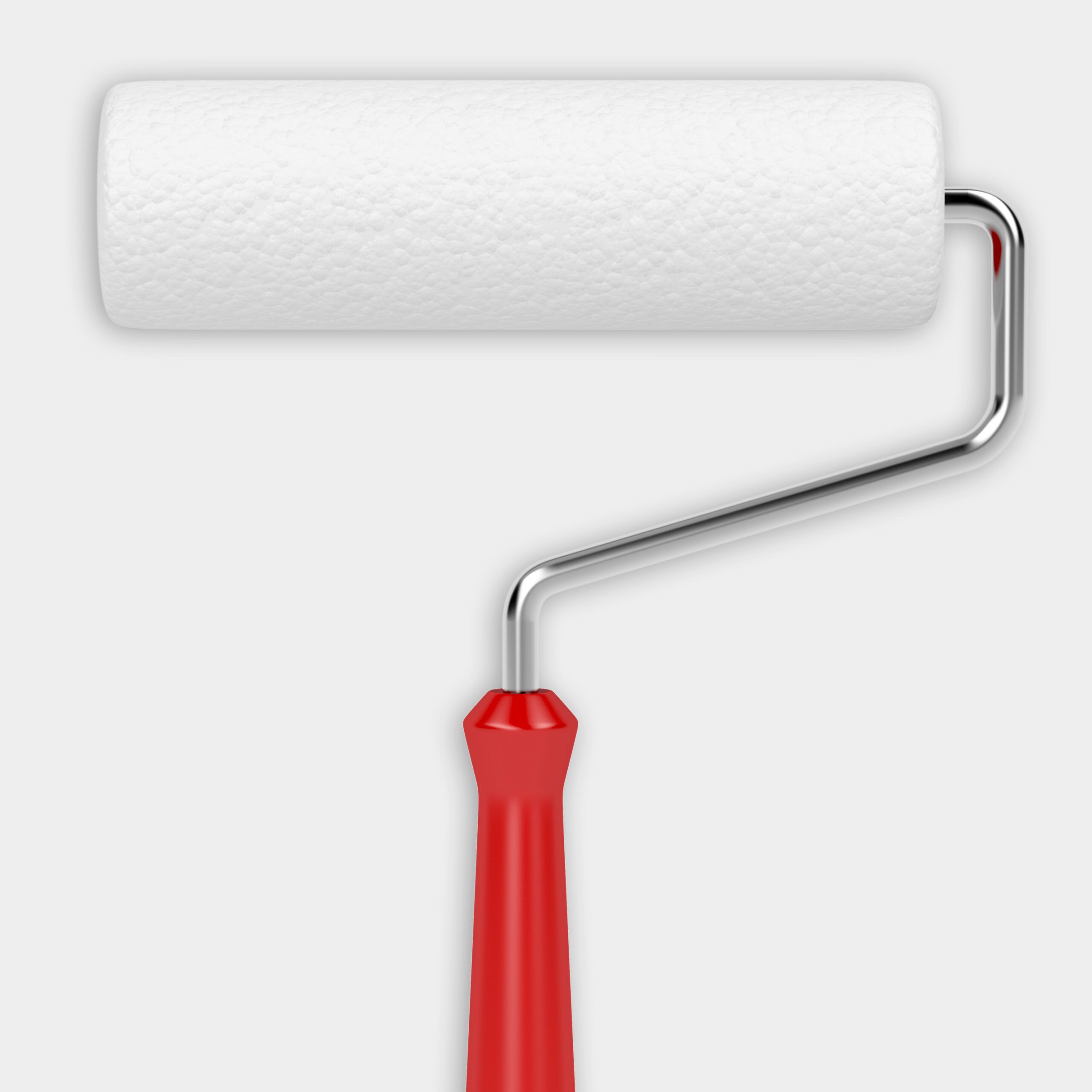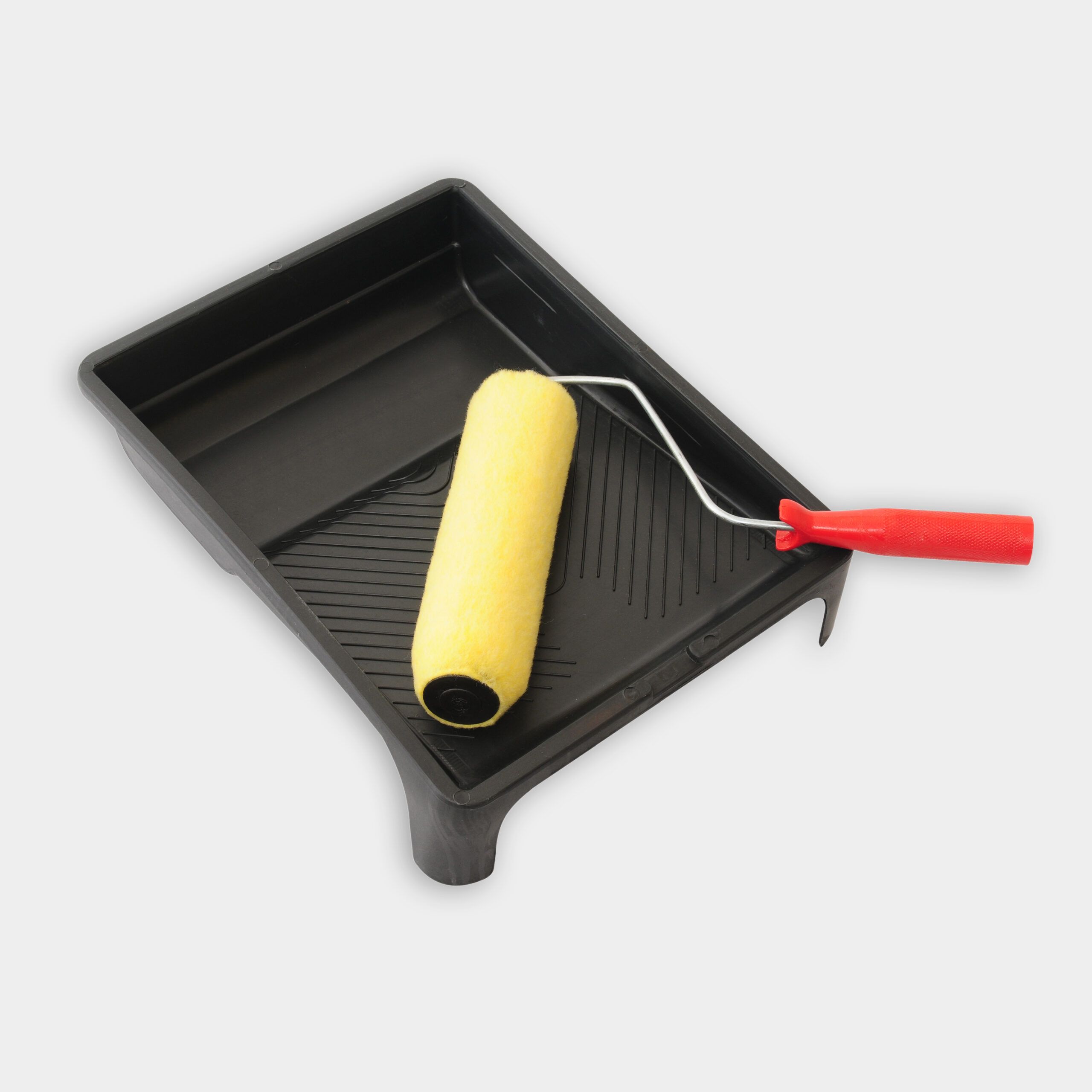We may be compensated if you purchase through links on our website. Our Reviews Team is committed to delivering honest, objective, and independent reviews on home products and services.
Painting a concrete foundation is an effective way to enhance your home’s curb appeal and protect the structure from moisture damage. This relatively simple DIY project can transform the look of your house while providing a protective barrier against the elements. In the video above, painting expert Mauro Henrique guides a homeowner through the process of revitalizing her foundation with masonry paint.
Materials and Tools
Gather the following items before starting this project:
- 4-inch stiff bristle paintbrush
- Drill
- Drop cloth
- Foundation paint
- Long-handled brush
- Medium gray primer
- Paint scraper
- Paint tray
- Roller and 1-inch thick roller sleeves
- Shovel
Preparing the Concrete Foundation for Painting
Before you start painting, prepare the area and address any outstanding problems with your foundation.
Clearing the Area
Remove any obstacles blocking access to the foundation, such as gutter downspouts. They can easily be removed with a drill and reattached after the project is over. Use a shovel to pull mulch away from the foundation. Dig down about two inches—this will allow the roller to cover the entire foundation without touching the dirt.
Cleaning and Scraping
Thorough cleaning and scraping are essential for proper paint adhesion. Here’s how to do it:
- Place a drop cloth underneath the foundation to collect any chips, flakes, or dust so they don’t land in the dirt.
- Use a paint scraper or painter’s tool to remove loose or peeling paint.
- Continue scraping until all remaining paint feels solid.
- Scrub the surface with a long-handled brush to remove dust and debris.
- Clean off the drop cloths before proceeding to the next step.
Addressing Moisture Issues
Moisture is a common cause of paint failure on foundations. Before painting, inspect the foundation for signs of water damage or leaks. Repair any cracks or holes in the concrete and make sure you have proper drainage measures installed.
Choosing the Right Paint for Concrete Foundation
Selecting the best paint is the key to a successful foundation painting project. Here’s what you need to know.
Masonry Paint
Masonry paint is specifically designed for use on concrete and other masonry surfaces. It offers several benefits:
- Breathability to allow moisture vapor to escape
- Excellent adhesion to hard concrete surfaces
- Resistance to moisture and weathering
Self-Priming Options
Many modern masonry paints are self-priming, which can save you time and effort. However, self-priming paints typically require two coats for optimal coverage. These paints need sufficient drying time between coats.
If you choose a paint that isn’t self-priming, thoroughly prime your concrete foundation. Concrete is porous, and if moisture seeps in, it can cause the paint to peel or bubble over time.
Color
When choosing a color for your foundation, consider complementing your home’s existing color scheme or using neutral tones for a subtle, cohesive look. Check local regulations, as some areas may have restrictions on exterior paint colors.
Applying the Paint to Foundation
With preparation complete and paint selected, you’re ready to begin painting. Follow these steps for the best results:
- Pour the paint into a paint tray.
- Use a 4-inch stiff bristle paintbrush to cut in along the top, sides, and bottom of the foundation.
- Be careful not to touch the soil with the paintbrush, but clean it off if you do.
- Load a paint roller with a 1-inch thick roller sleeve in the paint tray.
- Apply the paint to the foundation using W-shaped patterns. Maintain a wet edge to prevent lap marks.
- Avoid rolling all the way to the ground to prevent dirt from getting on the roller.
For optimal coverage and protection, allow the first coat to dry for at least four hours. Then, apply a second coat using the same cutting-in and rolling techniques. Let the final coat dry completely before pushing mulch back into place and reattaching downspouts.
Tips for a Professional-Looking Foundation Finish
Achieve the best results with these expert tips:
- Work on a day with moderate temperatures and low humidity for optimal drying conditions.
- Use high-quality brushes and rollers for smoother application and better coverage.
- Paint in sections, working from top to bottom to avoid drips and runs.
Maintaining Your Painted Foundation
To keep your newly painted foundation looking great for years to come, follow these maintenance tips:
- Regularly inspect the foundation for signs of wear or damage.
- Touch up any chips or scratches promptly to prevent moisture intrusion.
- Clean the painted surface annually with a gentle detergent and water.
Resources
Henrique helps a homeowner add to their home’s curb appeal by repainting a cracked and chipping paint foundation.
He removes the old chipping paint by scraping it with a 5-in-1 painter’s tool, moving parallel up against the peeling paint edges. To remove any remaining dust or debris, Henrique scrubs the foundation with medium to stiff nylon scrub brushes. To paint the foundation, he uses a medium grey primer and masonry paint and applies two coats. To cut in the edges, he uses 4-inch stiff nylon cutting brushes. To apply the rest of the paint, Henrique uses 3/8–1-inch thick paint rollers. Because the foundation has a rougher textured finish, 1-inch rollers will work perfectly to get full coverage over the uneven surface. This masonry paint requires four hours of drying time between coats.

